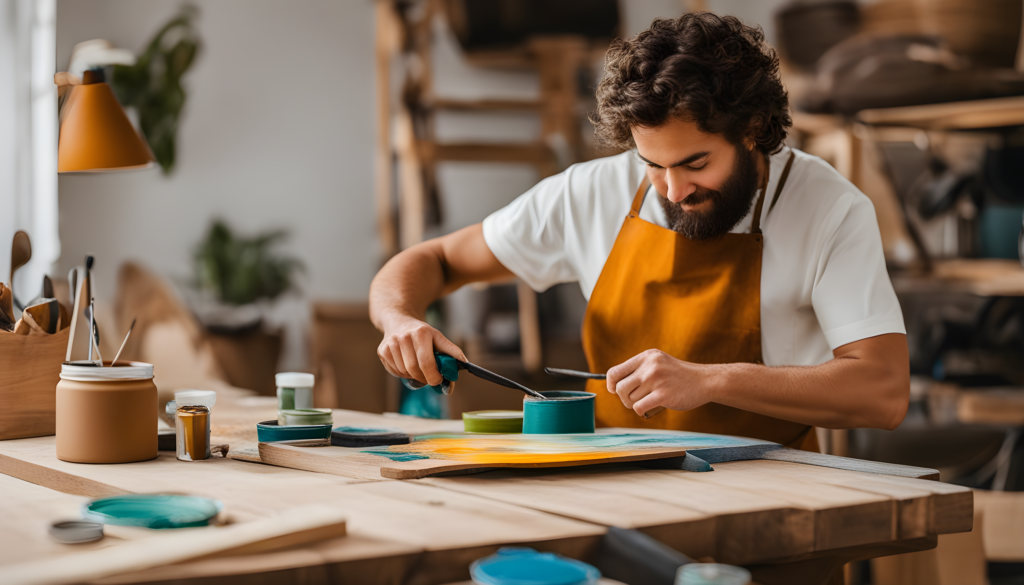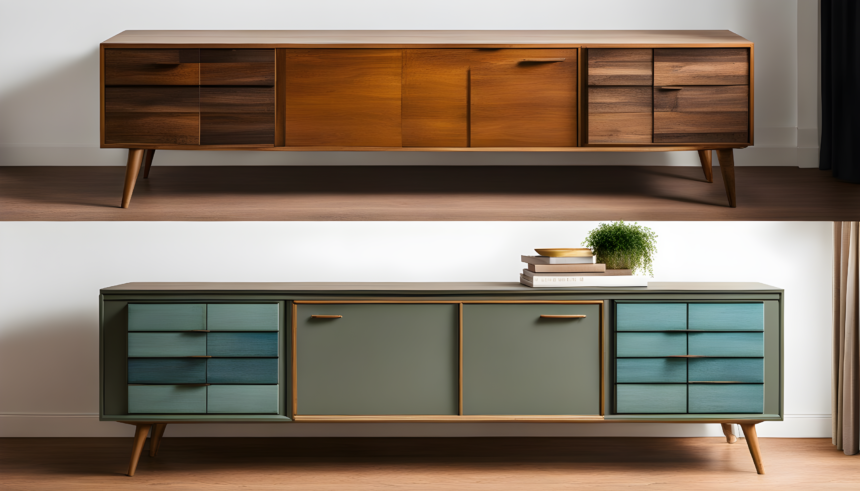Upcycling, the art of transforming old, discarded items into something new and exciting, has gained considerable popularity in recent years. It’s an environmentally friendly approach to breathing new life into items that might otherwise end up in landfills. But beyond the sustainability aspect, many people are also intrigued by the potential for profit that upcycling furniture offers. In this comprehensive article, we will explore whether upcycling furniture can be a profitable venture. We’ll delve into the basics, share success stories, provide essential tips, and answer some common follow-up questions. So, if you’re interested in the world of upcycling and its potential economic benefits, keep reading.
Understanding Upcycling Furniture
Before we can determine whether upcycling furniture is profitable, it’s crucial to have a solid grasp of what upcycling actually entails.
What Is Upcycling Furniture?
Upcycling furniture involves taking old or discarded pieces and giving them a fresh lease of life. This process can include refinishing, repainting, reupholstering, or even completely redesigning furniture items. The primary aim is to improve their aesthetics and functionality while extending their lifespan.
Upcycling is often confused with recycling, but the two concepts are distinct. Recycling typically involves breaking down materials to create new products, while upcycling focuses on enhancing and reusing existing items.
The Eco-Friendly Appeal
The Environmental Benefits of Upcycling
One of the key reasons upcycling has gained popularity is its eco-friendliness. It aligns with the principles of reducing waste, reusing resources, and lowering one’s carbon footprint. This appeal is not only satisfying on a personal level but also resonates with a growing environmentally conscious public.
Upcycling furniture contributes to reducing the demand for new items, which often involve resource-intensive manufacturing processes. By choosing to upcycle, individuals can play a part in conserving resources and mitigating environmental impact.
The Artistic and Creative Aspect
The Joy of Creativity
Many upcyclers are drawn to the creative aspect of the craft. Upcycling provides a canvas for artistic expression and allows individuals to experiment with colors, textures, and designs. For those who have a passion for interior design, upcycling offers an exciting opportunity to curate unique and personalized furniture pieces.
This creative aspect of upcycling can be highly fulfilling, regardless of whether it leads to profitability. Many people find immense satisfaction in transforming an old, tired piece of furniture into something beautiful and functional.
Is Upcycling Furniture Profitable?
The profitability of upcycling furniture is a complex topic. Whether it’s profitable or not depends on several factors, including your skills, market demand, initial investment, and more. Let’s break it down.
Factors That Influence Profitability
- Skill Level: Your proficiency in upcycling plays a significant role. If you’re an experienced upcycler with a keen eye for design and craftsmanship, you’re more likely to create items that are in high demand and can command higher prices.
- Market Demand: The demand for upcycled furniture can vary depending on your location and the trends in your region. Before diving in, it’s essential to research your target market to understand what styles and types of furniture are currently sought after.
- Initial Investment: Upcycling requires tools, materials, and a workspace. The initial investment can impact profitability. However, it’s possible to start small and gradually expand as your skills and business grow.
- Quality of Materials: The quality of the materials you work with can greatly influence the final product’s appeal and price. High-quality, sturdy, and unique pieces tend to fetch higher prices.
- Marketing and Branding: Building a brand and effectively marketing your upcycled furniture can also affect profitability. A strong online presence and a unique selling proposition can help you stand out in a competitive market.
- Competition: The level of competition in your area or online can impact your profitability. In some regions, upcycling may be a niche market with less competition, while in others, it might be more saturated.
- Pricing Strategy: Your pricing strategy is critical. Setting prices too low can hurt your profitability, while pricing too high might deter potential buyers. Finding the right balance is essential.
Success Stories
Real-Life Examples of Profitable Upcycling
To illustrate the profit potential of upcycling furniture, let’s look at a couple of real-life success stories:
Sarah’s Shabby Chic
Sarah, a passionate upcycle with a flair for vintage design, turned her hobby into a profitable business. She sources discarded furniture, refurbishes them with a shabby chic touch, and sells her creations online. Sarah’s unique style and attention to detail have attracted a loyal customer base, allowing her to make a comfortable income from her upcycling endeavors.
EcoCraft Furniture
EcoCraft Furniture is a company founded by a group of eco-conscious entrepreneurs. They specialize in upcycling discarded industrial materials into stylish, eco-friendly furniture pieces. Their commitment to sustainability and innovative designs have made them a profitable and socially responsible business.
These success stories highlight that with dedication, creativity, and a keen business sense, upcycling furniture can indeed be profitable.
Tips for Profitable Upcycling

Essential Tips for Success
If you’re considering venturing into the world of upcycling furniture as a business or a side hustle, here are some valuable tips to enhance your chances of profitability:
- Invest in Quality Tools: Quality tools are essential for achieving professional results. Invest in sanders, paint sprayers, and other equipment to streamline your work.
- Learn New Skills: Continuously improve your skills. Attend workshops, take online courses, and experiment with different techniques to stay on top of trends.
- Source Wisely: Scour thrift stores, estate sales, and online marketplaces for affordable furniture pieces with potential. The lower your initial investment, the higher your potential profit margin.
- Develop a Unique Style: Differentiate yourself by developing a unique and recognizable style. This will make your creations more sought after.
- Build an Online Presence: Create a website or use platforms like Etsy or social media to showcase your work. You need to have an internet presence if you want to reach more people.
- Network and Collaborate: Collaborate with local interior designers or home décor stores to reach a broader market. Networking can open up new opportunities for sales.
- Price Your Work Competitively: Research what similar pieces are selling for and price your items competitively. Be transparent about the time and effort invested in each piece.
Conclusion
In conclusion, upcycling furniture can indeed be profitable, but success depends on various factors, including your skills, market demand, and business strategies. It offers not only an opportunity for financial gain but also a chance to make a positive impact on the environment and exercise your creative talents. Whether you’re looking for a full-time business or a rewarding hobby, upcycling furniture is a venture worth exploring. With the right approach and dedication, you can turn discarded furniture into not only a source of income but also a source of personal satisfaction and eco-conscious pride. So, pick up that paintbrush, grab your tools, and start upcycling your way to a profitable and fulfilling endeavor.
Frequently Asked Questions
Addressing Common Concerns
Let’s address some common questions and concerns related to upcycling furniture profitability:
Q1: Is upcycling a viable full-time job?
Yes, upcycling can be a full-time job if you have the skills and market demand. Many upcyclers have successfully turned their passion into a full-time business.
Q2: Do I need formal training to upcycle furniture?
Formal training isn’t necessary, but it can be beneficial.
Many upcyclers are self-taught, learning through trial and error and online resources. However, workshops and courses can accelerate your learning curve.
Q3: How can I determine market demand for upcycled furniture in my area?
Research your local market by visiting flea markets, antique stores, and online marketplaces. Talk to potential customers and interior designers to gauge the demand for upcycled furniture in your region.
Q4: What are the best platforms for selling upcycled furniture?
Etsy, eBay, and your website or social media platforms are popular choices. Pick platforms that will appeal to your target market.
Q5: Is it possible to upcycle furniture with limited space and budget?
Absolutely. Start small and gradually expand as you gain experience and generate profits. You can upcycle furniture in a garage, spare room, or even a corner of your living space.







